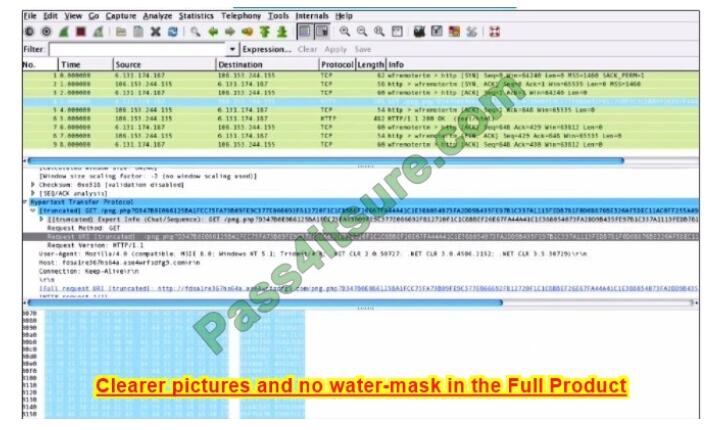Exam A
QUESTION 1
What are three goals of a port scan attack? (Choose three.)
A. disable used ports and services
B. determine potential vulnerabilities
C. identify active services
D. identify peripheral configurations
E. identify operating systems
F. discover system passwords
Correct Answer: BCE
QUESTION 2
Which characteristic best describes the network security Compliance domain as specified by the ISO/IEC?
A. The integration of security into applications
B. An invetory and classification scheme for information assets
C. The restriction of access rights to networks, systems, applications, functions, and data
D. The process of ensuiring conformance with security information policies, standards, and regulations
Correct Answer: D
QUESTION 3
Which two statements describe access attacks? (Choose two.)
A. Port redirection attacks use a network adapter card in promiscuous mode to capture all network packets that are sent across a LAN
B. Password attacks can be implemented using brute-force attack methods, Trojan Horses, or packet sniffers
C. Buffer overflow attacks write data beyond the allocated buffer memory to overwrite valid data or exploit systems to execute malicious code.
D. Port scanning attacks scan a range of TCP or UDP port numbers on a host to detect listening services
E. Trust exploitation attacks can use a laptop acting as a rogue access point to capture and copy all network traffic in a public location on a wireless hotspot
Correct Answer: BC
QUESTION 4
Which two statements are characteristics of a virus? (Choose two.)
A. A virus typically requires end-user activation
B. A virus has an enabling vulnerability, a propagation mechanism, and a payload
C. A virus replicates itself by independently exploiting vulnerabilities in networks
D. A viurs provides the attacker with sensitive data, such as passwords
E. A virus can be dormant and then activate at specific time or date
Correct Answer: AE
QUESTION 5
What is a characteristic of a Trojan Horse?
A. A Trojan Horse can be carried in a virus or worm
B. A proxy Trojan Horse opens port 21 on the target system
C. An FTP Trojan Horse stops anti-virus programs or firewalls from functioning
D. A Trojan Horse can be hard to detect because it closes when the application that launched it closes
Correct Answer: A
QUESTION 6
What occurs during a spoofing attack?
A. One device falsifies data to gain access to privileged information.
B. Large amounts of network traffic are sent to a target device to make resources unavailable to intended users
C. Improperly formatted packets are forwarded to a target device to cause the target system to crash
D. A program writes data beyond the allocated memory to enable the execution of malicious code
Correct Answer: A
QUESTION 7
Which statement describes phone freaking?
A. A hacker uses password-cracking programs to gain access to a computer via a dialup account
B. A hacker gains unauthorized access to networks via wireless access points
C. A hacker mimics a tone using a whistle to make free long-distance calls on an analog telephone network
D. A hacker uses a program that automatically scans telephone numbers within a local area, dialing each one in search of computers, bulletin board systems, and fax machines.
Correct Answer: C
QUESTION 8
What is a ping sweep?
A. A ping sweep is a network scanning technique that indicates the live hosts in a range of IP addresses
B. A ping sweep is a software application that enables the capture of all network packets sent across a LAN
C. A ping sweep is a scanning technique that examines a range of TCP or UDP port numbers on a host to detect listening services
D. A ping sweep is a query and response protocol that identifies information about a domain, including the addresses assigned to that domain
Correct Answer: A
QUESTION 9
Which type of software typically uses a network adapter card in promiscuous mode to capture all network packets that are sent across a LAN?
A. port scanner
B. ping sweeper
C. packet sniffer
D. Internet Information Query
Correct Answer: C

